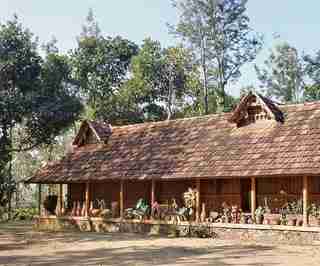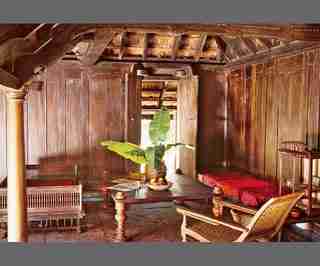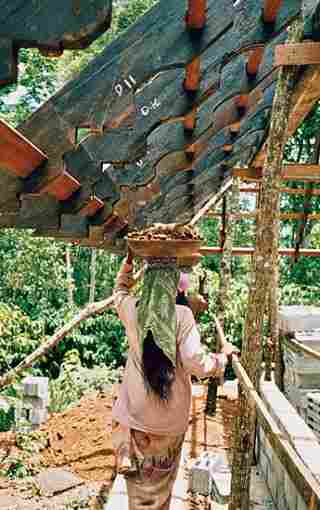Passage in India

dam-images-resources-2008-08-fry-resl01_fry.jpg
Pallam Palace (above), an 18th-century wood house in Tamil Nadu, India, was disassembled and relocated in 2002â2003 by the late British engineer Jeremy Fry. “It was made of something like 26,000 connected pieces, which, of course, we found out when we took it all apart,” says his son Francis, who has opened the palace to guests.

dam-images-resources-2008-08-fry-resl02_fry.jpg
The reception area is wood-paneled.

dam-images-resources-2008-08-fry-resl03_fry.jpg
A local woman assists in the reassembly of the building.
dam-images-resources-2008-08-fry-resl05_fry.jpg
“There’s much work to be done, but there’s a vitality and energy to the place that’s exciting,” remarks Francis Fry (with his father, in 1995).
dam-images-resources-2008-08-fry-resl06_fry.jpg
“When we found the building, it was pretty much on its last legs,” Fry remembers. In the library, as throughout, “the interior design is kept to a minimum so the building can speak for itself.”
dam-images-resources-2008-08-fry-resl04_fry.jpg
Built by a raja, the structure features gable ends with jalis, or carved lattice screens, that “deflect torrential rains and allow the circulation of air, essential in the tropics,” explains Francis Fry.
dam-images-resources-2008-08-fry-resl07_fry.jpg
In a bedroom off the garden, the Frys built closets, cupboards and paneling from timber found on the estate. “The detailing in the woodwork is taken from traditional design motifs from southern India.”
dam-images-resources-2008-08-fry-resl08_fry.jpg
The palace is set in the Palani Hills of the Western Ghats.